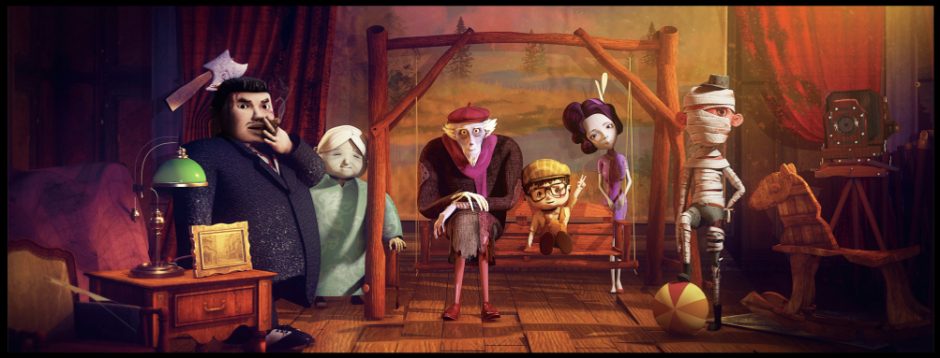This is the first time I have come into contact with Houdini. It can even be said that I have never come into contact with other software except Maya. In fact, learning software is not the ultimate goal, but using software and skills to create some art works. Although this software will be difficult to learn or even familiar with, the process of learning software is really a task to cultivate patience and perseverance. Since learning Maya is also a self-taught process, I am used to turning blog into a kind of note taking, so that I can read and review it later.
In the first week, we are actually getting familiar with the software and understanding some interfaces and commands, including the node model. I built wooden houses and stones. Because of the foundation of Maya, the idea of building a house is roughly the same as what I thought before, but this way of creating a house with nodes is very interesting and logical.
1 . Quick Introduction
Product Vision Compare
https://www.sidefx.com/products/compare/
Render: Mantra/RenderMan/Arnold/Mental Ray/Vray
Tip: Get the habit of using space when moving around in the viewport
2. Interface and Preference
(1) Viewport+Network
Ctrl W — only to retain the network

- press Esc then middle button/ left click/ right click — translate/ rotate/scale the viewport
- press S then can select the subject
- Enter — translate+rotate+scale (separately T/ R /S)
Render View — Render

Viewport

(2) Create Objects
Tab/Right click and find the object name

or Ctrl + Left click

(3) Hide and Display

(4) Parameters
(5) Preference
show or hide — P

Build
Save the new preference
(6) Set Up New Project
(7) Save files

3. Context
- image — compositing
- channel — animation
- materials — shaders
- out — rendering
- stage — USD
- tasks — PDG pipeline

mostly work in the object context
(2) a new context — Geometry
double click the object
(3) Animation
key frame — Alt+left click

after translate and then click the key icon to apply key animation

graph edition / shift + left click the translate

Noise
left click the translate — motion fx

(4) Render
shift + left click — Region rendering
select object render

Occlusion relation

4. Name
- SOP : Geometry : Surface operators
- Obj : Object
- DOP : Dynamics operators
- ROP : Render operators
- VOP : Vex operators (similar MEL for maya)
5. Transform
(1) press enter and +W E R — translate rotate scale (esc — not move)
(2) put the value to original 0 after change the value
right click the translate/rotate/scale + revert to defaults or Ctrl + Middle Button

6. Import
(1) F / space key+G — focus the model H — reorient the camera
(2) Alembic format (.abc) — CGI for arnold (render)
Bgeo format (.sc) — the best format to save
(3) click the object the it will only show the select one and hide the rest
if want to show two — add the merge
(4) modify uniform scale to make the object one to one scale
(5) test — some model and animation that provide in houdini

(6) middle click the mouse on the object click the “i”
it will show the information of the object like the height

(7) change the end frame & real time toggle

(8) Autoupdate and Manual
When performing special effect operation, in order to prevent every data change from consuming a lot of time, we can choose the time of each view change update automatically or manually.

(9) Auto arrange nodes — L
(10) *= All Files
(11) Convert node — Convert to package object into polygon

7. Export
(1) export node — Rop_geometry/File_cache

(2) path
click the output file can change it into detailed path


- $HIP = save file path
- geo = folder name
- $OS = export geo name
- $F4 = Frame number 0001
- .bgeo.sc = houdini output format ( e.g: can change the .bgeo.sc into obj )

8. Scence
(1) D — change the background light and some other options
(2) U and I — jump up and down
(3) Attribnoise

(4) Save the file


9. Exercise
(1) Rocks
change it from primitive to polygon

Display form

change the position attribute of the noise

add the null
and change the range values

outcome

(2) Wooden house
(1) put the box on the floor
copy the parameter of size and paste it to center ( paste to relative reference)
select the points and create transform node


Alt+ Drag = Duplicate
create boolean

Polyextrude — Thickness ( remember to select the output back)
Reverse — Normal flip
the roof — twice extrude

Delete and non-delete

Copy and Transform

Outcome


Q&A
- What is the difference of output front and output back?
- What is the principle of delete node? Why can it only remove the roof, walls, and foundation as a whole? Why it will not delete half of the houses, and what to do if I want to delete half of the houses.
- There are two polyextrude steps when building the roof, and the second one is added the choice of selecting the group of extrudeSide, what is the difference between the two.
- If we want to make some special effects, is it necessary to modeling in Houdini or just a way to be familiar with SOP. Because I think modeling in Houdini is time-consuming.
